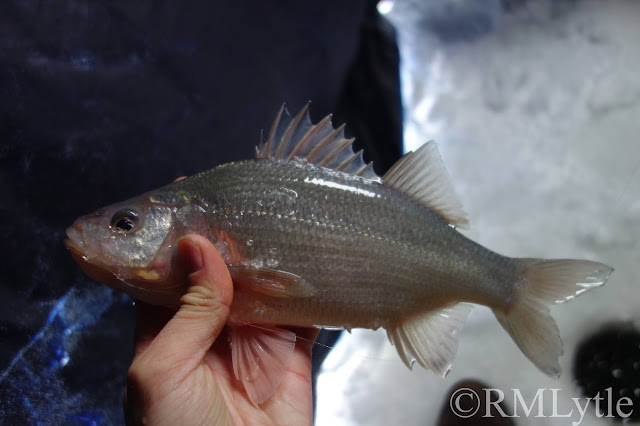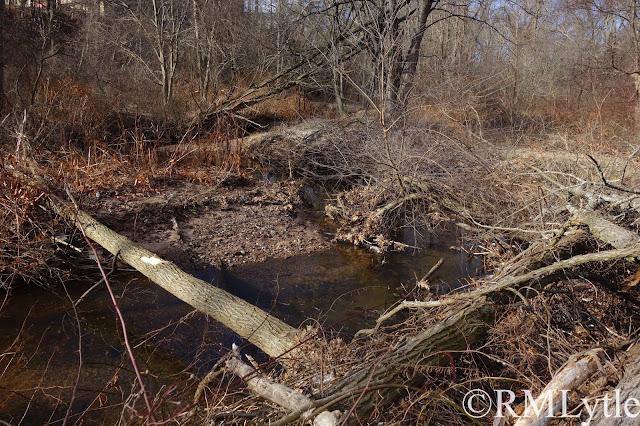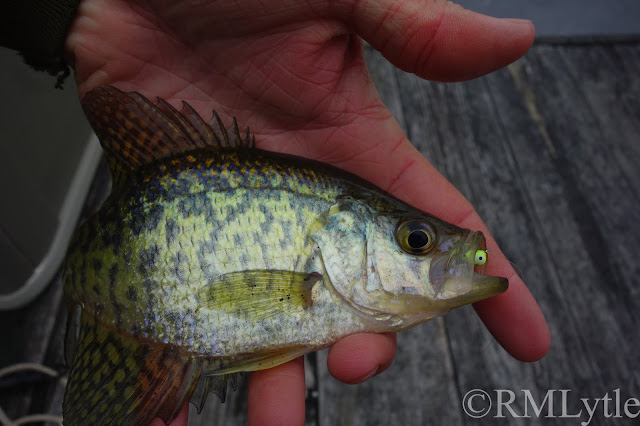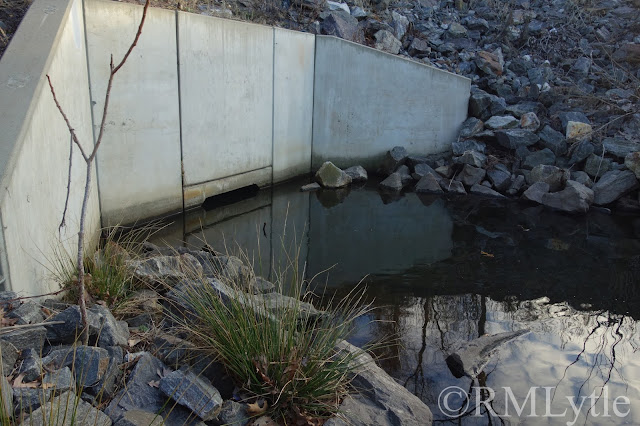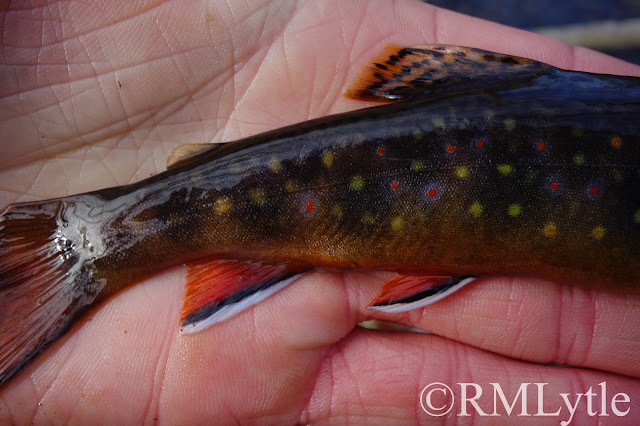When I took a few steps down the bank to the a tributary of the river I was intending to fish a few days ago and saw a sizable trout rise under the bridge upstream from me, I was sure I'd just found something special. This small stream boasted a pretty good wild trout population. At the time I first saw the fish surface, I didn't know it ever got stocked. The assumption was this had to be either a wild resident, a large holdover, or wild fish from the larger river just downstream. I sat and watched for a while. I was on the phone with my grandmother anyway, which made it easier to be patient, but I like to observe a riser for a bit before I make my shot. By the time we'd said goodbye, three more fish had risen and I'd determined that they were feeding on midge emergers. I was already in a good enough position. I'd have to cast over a small log but that wouldn't be much of an issue. Heart pounding, I tied on a size 24 midge. I waited for the fish to rise again, he was doing sets of three, and made my presentation. The fish came up and sipped, I set the hook, and everything changed the moment I saw the fish. It was a grey, disproportionate brown trout with worn fins. A stocker; not even a holdover. I looked up and another fish rose in the same spot. I shook off the brown I had on, changed to a size 14 Sedgehammer, and promptly hooked a 14 inch rainbow.
Now I understood. This wasn't real, but it wasn't a dream either. This was a synthetic winter dry fly bite. These trout hadn't been born in a river, they grew to size rapidly on a diet of small brown pellets. These fish weren't conditioned to spurn insects on the surface when there weren't enough to make it worth expending their energy. These fish were used to looking up for food at all times. I could have put on a dry twice the size and it still would have worked. I almost certainly could have found a mouse perfectly tempting right there and then. My shoulders slumped a bit. This really wasn't what I'd hoped for.
I fished on for a bit, if for no other reason than to get that dry fly hook set muscle memory back. I chucked a streamer in the pool briefly too, just to see if there was a really big brown in the mix somehow. But after a while I couldn't take it anymore. I headed down to the larger river to see if I could find something wild there.
 |
| No, this is not a tiger. This is what happens to brown trout after years of genetic muddling. |
I didn't. All I got were freshly stocked browns and rainbows. Even more than a mile downstream from any stocking location, I got grey, nub-finned browns. I caught 33 fish that day. Not one of them felt fulfilling or challenging. I just happened to be fishing water that had been stocked that very morning. My February dry fly fish was out of the way but my itch to beat on hatchery trout the way I used to doesn't exist anymore. I can't wait to find some real big wild fish rising to a real hatch in the very place they were born. I need it so, so badly.
Until next time,







